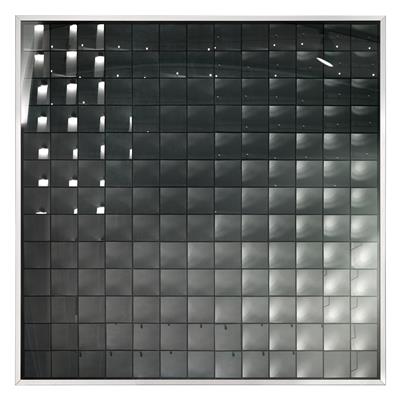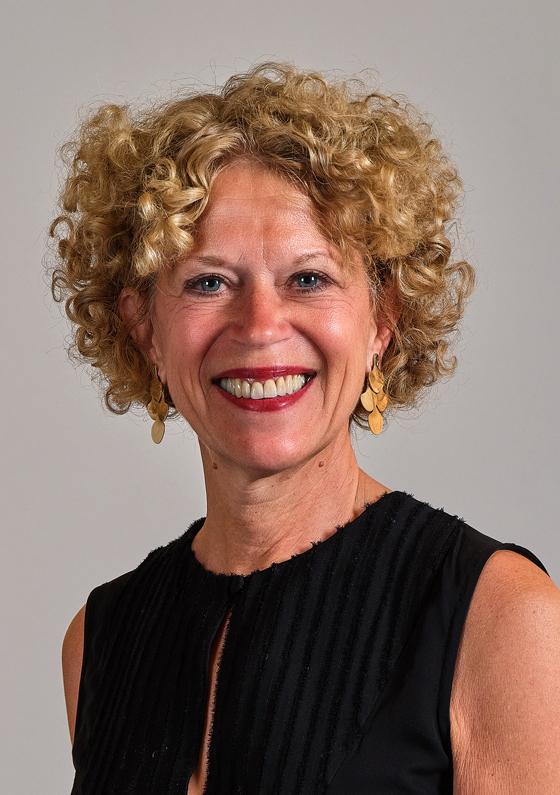Adolf Luther *

(Uerdingen 1912–1990 Krefeld)
Concave Mirror Object black, on the reverse signed, dated Luther 88, and stamped in red ‘Energetische Plastik’ and ‘Sehen ist schön’, 169 black mirrors on black wooden panel, 154 x 154 cm, in original aluminium frame (PS)
Provenance:
Private Collection, Rhineland - directly from the artist
The work has been registered by the Adolf Luther Stiftung, Krefeld under the CR no. HSP 88/009.
We are grateful to Dr. Magdalena Broska, Adolf Luther Stiftung, Krefeld for her kind assistance.
“When I didn’t want pictures any more, I didn’t want beauty in the form of sublime, stunning, moving or distressing beauty, either. Perhaps I just wanted to amaze, since, as a result of my choice of light and matter as a subject, reality becomes unrecognisable. This becomes visible in my objects. We can do nothing but be amazed, and that is also all I’ve ever wanted.”(1)
“Art is the procedure by which we win reality, and for this reason it is experimental.”(2)
For Adolf Luther reality is not the observable world of phenomena that stands in the tradition of a mimetic art; rather, his reality is to be found under, or rather beyond, the immediately observable – it is light, it is that radiating energy that enables, and reveals, life on earth across the dark universe. The instrumental reality of Luther’s Concave Mirror Objects manifests itself in the multiplication of existing reality, whereby its reflection generates a luminous phenomenology of the object’s materiality expanding into real space.(3) His understanding of light is physical, transoptical, since his reality does not serve to achieve visibility; rather, the conditions of visibility are reflected for him and in his art. With his Concave Mirror Objects, Adolf Luther is able to find a direct solution to the problem he has chosen to address: how to make the invisible nature of light immediately visible. With his concave mirrors, Adolf Luther finds a medium that does not absorb light, but breaks it and reflects it with objects that are as immaterial as possible, and is capable of manifesting its luminosity with optimal limpidity. The black Concave Mirror Object is a rarity in the series devoted to concave mirrors. In this object, light and the transoptical reality that surrounds us are broken and represented for the viewer in a very special way. The images created in the black mirrors display a different, unusual colouring, and yet they are not made of material colour but only of pure, immaterial light energy. The images are omnipresent and are permanently perceived by our eye in forms that vary depending on the position and movement of our body. By means of 169 mirrors with very slightly different orientation, Luther is able to make almost all of the impressions existing in a room visible for the viewer. “An analogy consists in the openness of the structure towards real space and the transformation of real space through that structure.”(4)
(1) Adolf Luther, Das Licht kann kein Bild sein, Cologne 1984, p. 139
(2) Magdalena Broska, Adolf Luther, Eine außergewöhnliche Künstlerkarriere, Goch 2012, p. 9
(3) Ivi, p. 22
(4) Max Imdahl in: Adolf Luther, Licht und Materie, Recklinghausen 1978, p. 24
Expert: Dr. Petra Maria Schäpers
 Dr. Petra Maria Schäpers
Dr. Petra Maria Schäpers
+49 211 2107747
petra.schaepers@dorotheum.de
26.11.2014 - 18:00
- Dosažená cena: **
-
EUR 75.000,-
- Odhadní cena:
-
EUR 40.000,- do EUR 60.000,-
Adolf Luther *
(Uerdingen 1912–1990 Krefeld)
Concave Mirror Object black, on the reverse signed, dated Luther 88, and stamped in red ‘Energetische Plastik’ and ‘Sehen ist schön’, 169 black mirrors on black wooden panel, 154 x 154 cm, in original aluminium frame (PS)
Provenance:
Private Collection, Rhineland - directly from the artist
The work has been registered by the Adolf Luther Stiftung, Krefeld under the CR no. HSP 88/009.
We are grateful to Dr. Magdalena Broska, Adolf Luther Stiftung, Krefeld for her kind assistance.
“When I didn’t want pictures any more, I didn’t want beauty in the form of sublime, stunning, moving or distressing beauty, either. Perhaps I just wanted to amaze, since, as a result of my choice of light and matter as a subject, reality becomes unrecognisable. This becomes visible in my objects. We can do nothing but be amazed, and that is also all I’ve ever wanted.”(1)
“Art is the procedure by which we win reality, and for this reason it is experimental.”(2)
For Adolf Luther reality is not the observable world of phenomena that stands in the tradition of a mimetic art; rather, his reality is to be found under, or rather beyond, the immediately observable – it is light, it is that radiating energy that enables, and reveals, life on earth across the dark universe. The instrumental reality of Luther’s Concave Mirror Objects manifests itself in the multiplication of existing reality, whereby its reflection generates a luminous phenomenology of the object’s materiality expanding into real space.(3) His understanding of light is physical, transoptical, since his reality does not serve to achieve visibility; rather, the conditions of visibility are reflected for him and in his art. With his Concave Mirror Objects, Adolf Luther is able to find a direct solution to the problem he has chosen to address: how to make the invisible nature of light immediately visible. With his concave mirrors, Adolf Luther finds a medium that does not absorb light, but breaks it and reflects it with objects that are as immaterial as possible, and is capable of manifesting its luminosity with optimal limpidity. The black Concave Mirror Object is a rarity in the series devoted to concave mirrors. In this object, light and the transoptical reality that surrounds us are broken and represented for the viewer in a very special way. The images created in the black mirrors display a different, unusual colouring, and yet they are not made of material colour but only of pure, immaterial light energy. The images are omnipresent and are permanently perceived by our eye in forms that vary depending on the position and movement of our body. By means of 169 mirrors with very slightly different orientation, Luther is able to make almost all of the impressions existing in a room visible for the viewer. “An analogy consists in the openness of the structure towards real space and the transformation of real space through that structure.”(4)
(1) Adolf Luther, Das Licht kann kein Bild sein, Cologne 1984, p. 139
(2) Magdalena Broska, Adolf Luther, Eine außergewöhnliche Künstlerkarriere, Goch 2012, p. 9
(3) Ivi, p. 22
(4) Max Imdahl in: Adolf Luther, Licht und Materie, Recklinghausen 1978, p. 24
Expert: Dr. Petra Maria Schäpers
 Dr. Petra Maria Schäpers
Dr. Petra Maria Schäpers
+49 211 2107747
petra.schaepers@dorotheum.de
|
Horká linka kupujících
Po-Pá: 10.00 - 17.00
kundendienst@dorotheum.at +43 1 515 60 200 |
| Aukce: | Současné umění - Part 1 |
| Typ aukce: | Salónní aukce |
| Datum: | 26.11.2014 - 18:00 |
| Místo konání aukce: | Wien | Palais Dorotheum |
| Prohlídka: | 15.11. - 26.11.2014 |
** Kupní cena vč. poplatku kupujícího a DPH
Není již možné podávat příkazy ke koupi přes internet. Aukce se právě připravuje resp. byla již uskutečněna.
